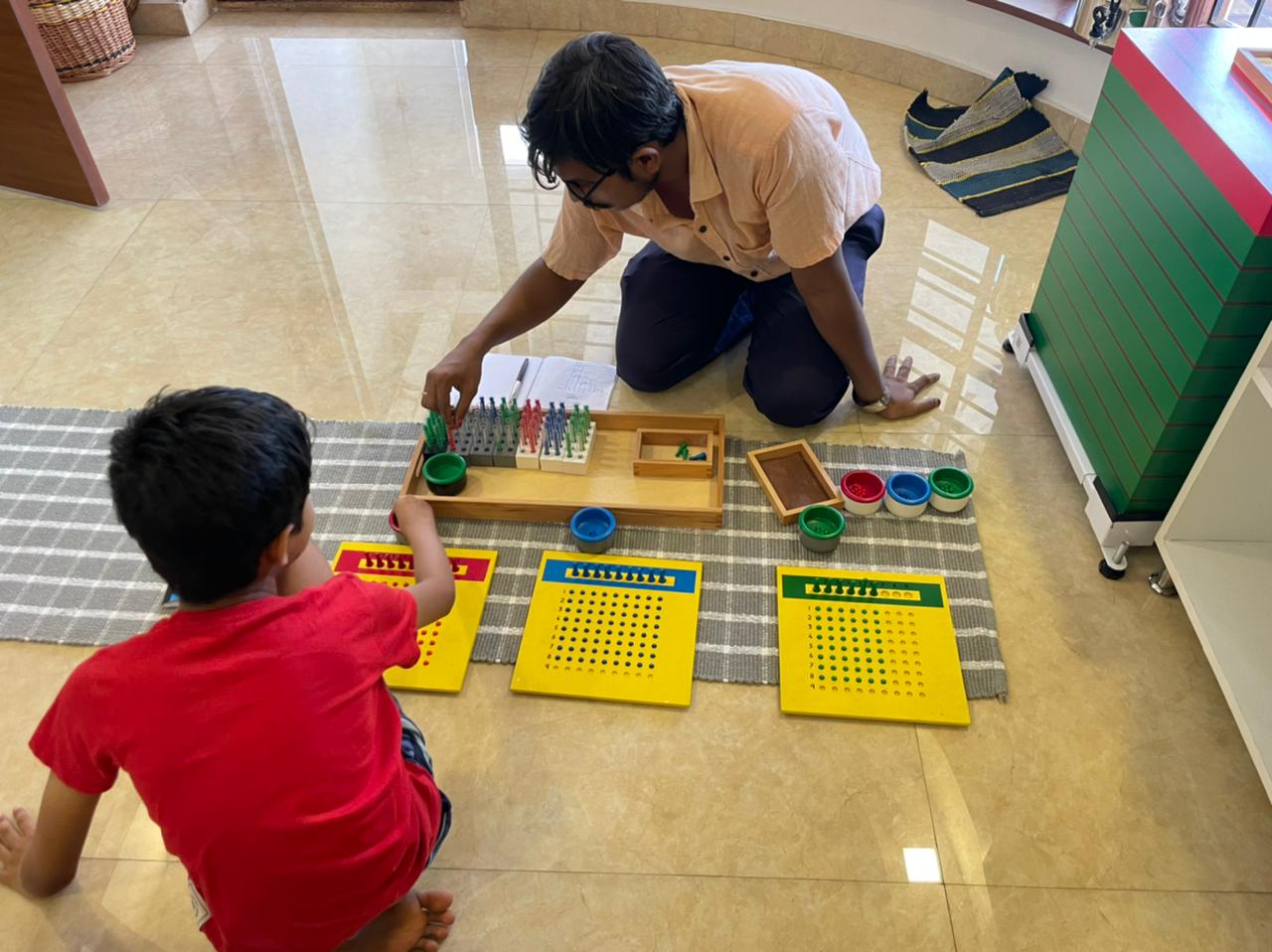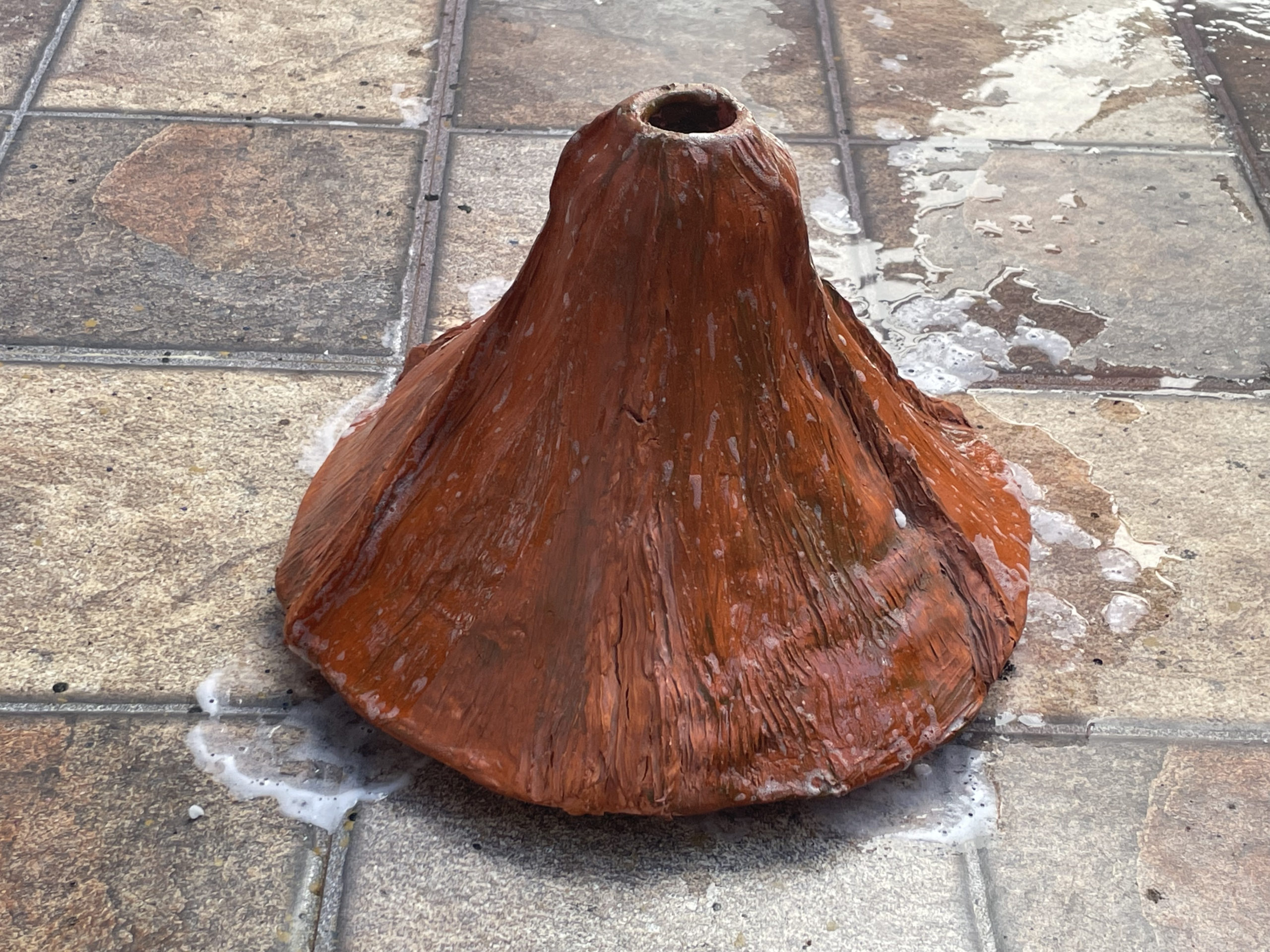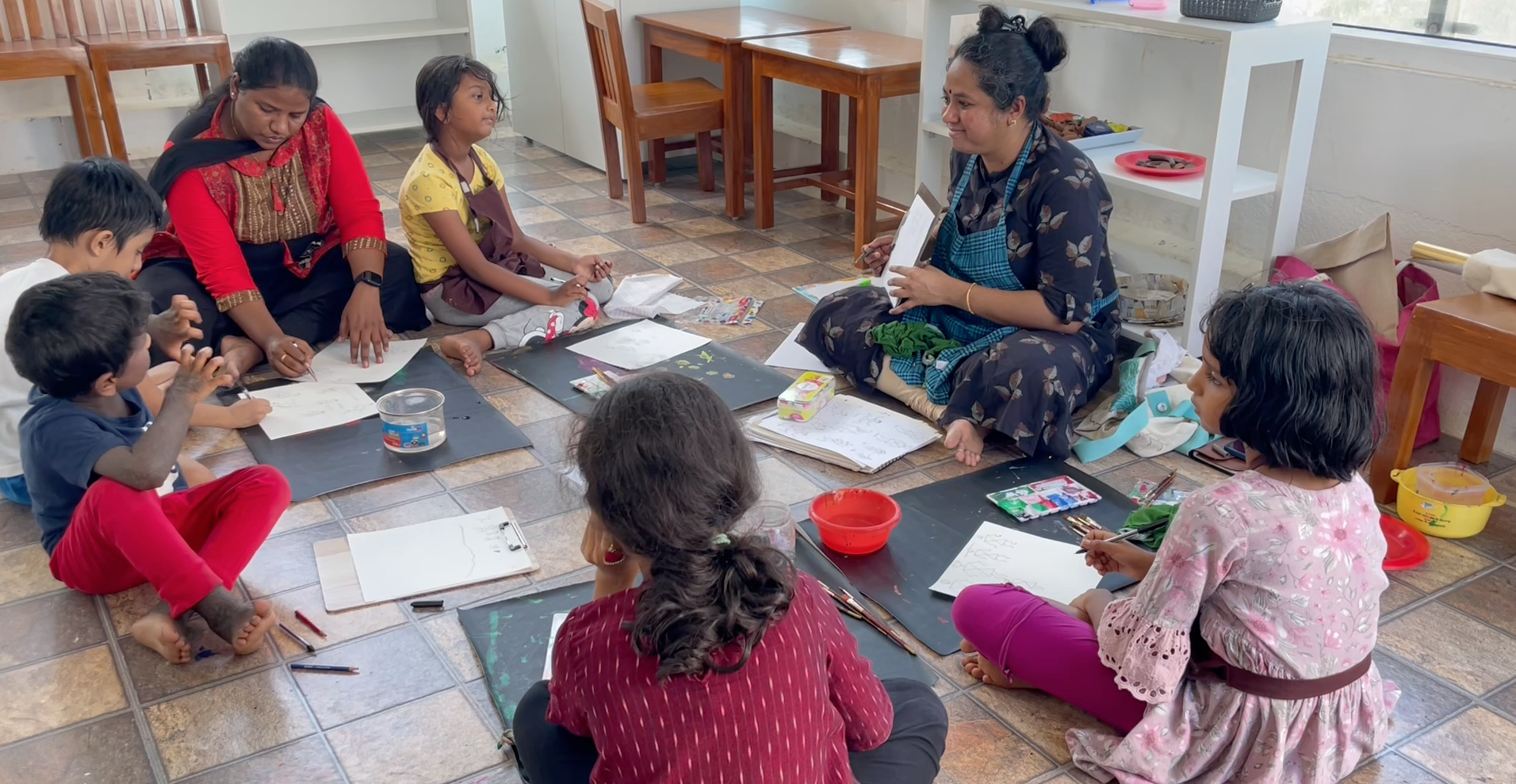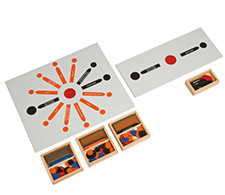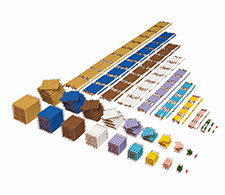The Elementary Classrooms
In our Elementary classroom, students work individually or in small groups, at tables or on mats on the floor. Natural lighting, soft colors, and uncluttered spaces set the stage for activity that is focused and calm. Learning materials are arranged on accessible shelves according to curricular area, fostering independence as students go about their work. Everything is where it is supposed to be, conveying a sense of harmony and order that both comforts and inspires.

